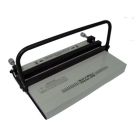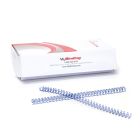Prepare a Great Business Presentation
Putting together a business presentation can be a stressful task. Here are a few things to keep in mind.
Gathering Your Ideas
The first thing you will want to do when you are starting to prepare a business presentation is to sit down with a notebook and write down all of the key points you want to make. Mind mapping is a great method of keeping things relatively organized while doing this sort of brainstorming, as it allows you to make direct connections to ideas whenever they may pop up during the process. You can also be thinking ahead at this point and make notes regarding what parts of your presentation would be enhanced by visual aids or some facts and figures. When you are doing your research, don't just rely on Google. Dig deep, make some phone calls, and conduct some interviews if necessary to find numbers to support what you are trying to put forth.
Writing and Practicing Your Presentation
Once you have all of your ideas together, pull out the main points and start to organize them into an outline. Make sure that it flows in a natural order, or at least one that will make sense to your audience. Then, start to flesh your outline out into a full speech. There are a couple of ways to do this, depending on your experience and ability. You can either make a series of index cards, or work from a list of bullet points.
One thing to remember when putting together a business presentation speech is that brevity is always appreciated. You do, of course, want to make sure that your points are well made, but make sure you aren't overloading your audience with information. The sad fact is that most people will walk away from your presentation remembering just a few key points - perhaps even with one single overall impression. Make sure that those points are the one or ones you most want them to remember.
Of course, your speech is not done until you have practiced it as much as is humanly possible, and made whatever changes you need to make based on the feedback you receive. Practice in front of a mirror, your colleagues, your family and friends, and gather as much constructive criticism from them as they are willing to give you. Try as much as possible to create a seamless presentation that moves from point to point (and to your AV and other materials) smoothly.
Some other things to keep in mind are to keep your tone as natural and conversational as possible, to know your facts and transitions cold, and to employ the right amount of body language.
Getting Your Materials
PowerPoint is a wonderful tool, just keep in mind that you will want to keep your slides to a maximum of 15 or so for an hour-long presentation. It's always a great idea to leave your audience with a takeaway as well, as this helps with the retention factor. Charts, graphs, photos of your product or service in use, sales materials, etc, should be given to each member of your audience and attractively bound.









